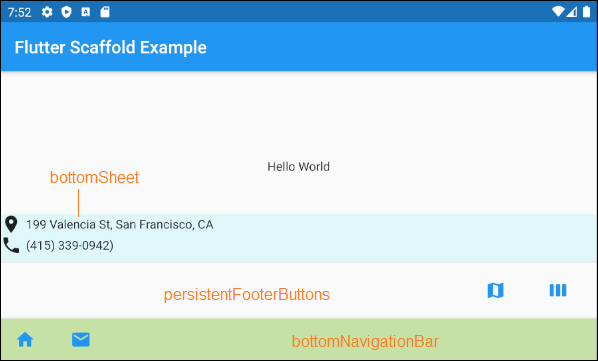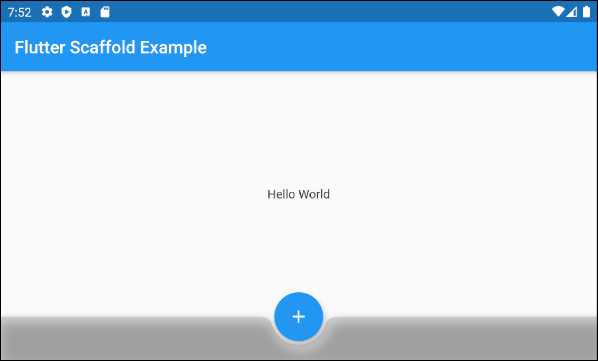
Using the Flutter LayoutBuilder to create an adaptive appįlutter provides many widgets you can use when building your adaptive application.

You should customize the experience and interface of your application to suit the host device. You’ll also need to account for the mouse, keyboard, touch inputs, and other characteristics particular to each platform. In most cases, the available width of the screen could be more important than its available height because of the influence of vertical scrolling.
#FLUTTER SCAFFOLD SIZE ANDROID#
In a section of the Android documentation are a set of recommended values to help you decide the layout of your application across different screen sizes. Your users should be able to explore your application on these varying devices and still enjoy the experiences native to the devices and OS.Īn important decision you’ll have to make in your design or development phase is determining the threshold at which your application should switch its layouts. To improve the user experience, you should design your application to accommodate different devices (phones, foldables, tablets, smartwatches, and PCs) with varying designs, sizes, shapes, and operating systems. What to consider when building an adaptive app That is, the design of your application on a mobile device would be different on a larger screen such as a desktop device. On the other hand, an adaptive design requires that you create platform-specific designs, content, and templates. The contents of the app are simply rearranged to fit the screen size. A responsive application dynamically changes the layout of its interface based on the available screen size, but maintains the laid-out design. It is important to note that adaptive design should not be confused with responsive design. For example, an adaptive application renders different interfaces on mobile and desktop views using the same codebase.
#FLUTTER SCAFFOLD SIZE HOW TO#
You’ll learn how to build a basic ecommerce application that adapts to a given device’s size without having to rebuild the app as the screen size changes. This article will demonstrate how to create an adaptive app with Flutter.

This is a feature you have to account for during your development process. In most cases, these devices come in different sizes, and despite Flutter’s cross-platform capabilities, you cannot guarantee that the interface of your application would, by default, render as expected across these devices.
#FLUTTER SCAFFOLD SIZE WINDOWS#
Creating an adaptive app with Flutterįlutter has been widely adopted because of its flexibility to build applications to run on your Android, iOS, macOS, and Windows machines with one codebase.

When he's not talking to his laptop, you'll find him hopping on road trips and sharing moments with his friends, or watching shows on Netflix. He has a knack for slapping his keyboards till something works. Damilare Jolayemi Follow Damilare is an enthusiastic problem-solver who enjoys building whatever works on the computer.


 0 kommentar(er)
0 kommentar(er)
